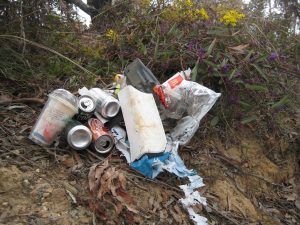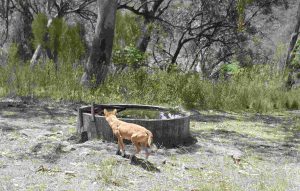Methods to predicting rain
Whether it’s based on looking at ants nests, turtles going up hill or if their knee hurts, we all know someone who has a foolproof method for predicting rain.
Watershed Landcare caught up with Dr. Andrew Watkins, Supervisor, Climate Prediction Services with the Bureau of Meteorology to find out how the climate scientists do it.
“The bureau model used for long range outlooks is a dynamical model. It’s based on the physics of the atmosphere, physics of the oceans, physics of land processes, how moisture gets into soil and so on, and also the physics of ice and how that moves.” said Dr. Watkins.
The Bureau of Meteorology (BOM) did not issue long range climate forecasts prior to computers but it was really the arrival of the satellite era in the 1980s, and the vastly increased capacity to collect data, which allowed modelling.
“The physics based models are very complex. Just for the atmosphere we use between 40 and 60 million pieces of data every time we run it.” said Dr. Watkins.
The bulk of the data comes from satellite but also buoys out at sea, weather stations on land, aircraft and ships. The data is put into the models and is then pushed forward with the laws of physics, shuffling the oceans and atmosphere in 3 dimensions.
“We can’t do the physics down to an atomic scale, to see what happens to each individual atom, so at some stage you have to make a compromise at what the physics are on a broad scale.” said Dr. Watkins.
The BOM works in collaboration with CSIRO scientists to determine the important elements within physics to be included, constantly searching for ways to improve the model slightly.
“We just can’t measure the current weather at every single location, we don’t all have a weather station at our front gate. So the models have to make an assumption about what’s going on at a particular location.” said Dr. Watkins.
“If that assumption is even slightly incorrect, the upshot of that is that the small difference between reality and what we’re assuming, over time, will grow and will get to a time where it no longer makes sense.” he continued.
For that reason the seasonal climate outlooks issued by the BOM are probabilistic, which means they state the odds of a given outcome occurring.
“With probabilistic forecasts you always have to remember to turn them the other way, if there is a 60% chance of it being wet that means there is a 40% chance of it being dry. So you have to weigh up the odds there,” said Dr. Watkins, “if a 40% chance of it being dry is a risk you have to take that into account.”
“What we try to do in the BOM is give people odds in their favour, so if you’re using the seasonal outlook over a number of years you’ll be coming out ahead overall. Use it conservatively; look at the odds, look at the money in the bank, look at the current soil moisture conditions, various other things and make decisions based on all those things together.”



